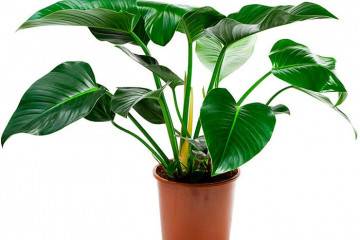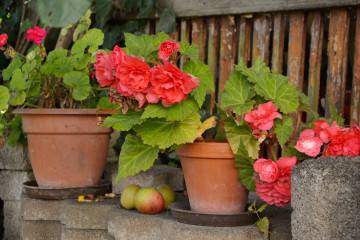How to feed an orchid at home: folk and improvised remedies
Content:
Novice flower growers are wary of exotic orchids. Flowers grow without soil. The substrate is tree bark and expanded clay. The question arises of how to feed an orchid at home, because the substrate is quickly depleted.
The importance of feeding orchids
Wild orchids are epiphytic flowers. They grow on other trees, but do not feed on their sap. Used as a backup. The roots do not need soil. They are outdoor, airy. Like a sponge, they absorb nutrients from moisture, independently synthesize inorganic substances into organic ones.
In nature, in the tropics, roots extract food from the environment. In home floriculture, they are provided with complex nutrition by fertilizers and feeding.
Fertilization methods
Before feeding, learn the rules.
Do not feed:
- during the dormant period of culture;
- transplanted flower;
- sick plant;
- in hot weather, during a period of high solar activity.
Before feeding, the flower is watered - dry roots will get burned. It is better to underfeed the plant than overfeed. This is the answer for inexperienced florists to the question of how often an orchid needs to be fed.
Fertilizers are used exclusively liquid. They contain mineral and organic substances in the correct proportion.
Root dressing
Orchids are fertilized with special preparations. They differ in composition from the dressings for other home flowers.
The composition includes:
- nitrogen - for growing green mass;
- phosphorus - develops the root system;
- potassium - increases resistance to disease;
- trace elements - for the development of the stem and leaves, sustainable flowering.
On the labels, manufacturers indicate the content of substances with the letters N, P, K. Also indicate "For orchids".
Root dressing is used to replenish the supply of nutrients in the substrate. If fertilizers are used for ordinary flowers, then the concentration is reduced by 10 times.
Top dressing requirements:
- The acidity pH should be 5-7 units.
- The nitrogen concentration should be low so as not to inhibit the development of buds and flowers.
- Fertilizers should contain substances that prevent salt deposits in the roots. Also vitamins and amino acids.
Mineral fertilizers are used more often. Organic matter is added when there is an excess of nitrogen. They do not refuse nitrogen - it is necessary for the leaves.
In the arsenal, flower growers keep fertilizers with nitrogen for growing leaves, and phosphorus for peduncles.
Foliar dressing
Foliar feeding of phalaenopsis (it is most often cultivated at home) is carried out on the leaves. For this, sprays are used. You can dilute orchid fertilizer, but reduce the concentration.
This top dressing is used when the culture is blooming. It is carried out with care so that the liquid does not fall into the middle of the flower. Better to protect it while spraying.
Foliar feeding rules:
- The norm is 2 times a month.
- Concentrate - 2 times lower than for root feeding.
- The solution is poured into a spray bottle. It is necessary that it does not hit with a jet, but create a cloud of water dust.
- The can is shaken so that a more concentrated solution does not turn out at the bottom.
- The leaves are sprayed on both sides, the aerial roots are lightly sprayed.
- Flowers are not sprayed.
- After the procedure, the plant is not exposed to sunlight.
- Spray in a warm room (18-26 ° C). They take warm water.
- They are fed in the morning and evening hours.
Preparations for feeding orchids
When deciding how to feed an orchid in a home greenhouse, they choose from preparations:
- Agricola is a complex fertilizer with mineral and humic components.
- Bona Forte - for stable flowering. Increases immunity to diseases and pests.
- "Ideal" is a complex composition for root and foliar dressing. Increases flowering time.
- "Effect" - to strengthen the immune system.
- "Biomaster" - combines organic matter with mineral fertilizers. Contains trace elements in a complete set - "kids" take root well, the flowering period is lengthened.
Folk remedies for feeding
Abundant flowering is provided by folk methods from scrap materials:
- Banana peel infusion. It is dried, crushed, filled with 2 liters of warm water. Insist 2-3 days, filter. Dilute with standing water 1: 2, water the roots.
- Onion infusion. With a glass of water, pour the husk from one onion, simmer over low heat for 10 minutes. Cool, filter, dilute with room water to a light shade. Water the culture.
- Potato broth. The cleaning is poured with boiling water, insisted until it cools. Water when the temperature of the broth becomes 35 ° C. It is an organic biostimulant for orchids.
- Tea coffee. The tea leaves are diluted to a transparent weak solution, watered once a month. The drunk coffee is brewed again, insisted. Before watering, dilute 1: 2 with liquid.
Yeast feeding
Beginners are interested in flora, is it possible to water epiphytic orchids with yeast. Not really.
Yeast is a fungus. They only help release nutrients from the soil. Therefore, they are not suitable for epiphytic varieties. But work well for terrestrial orchid varieties. Promote the growth of culture, strengthen immunity, resistance to external factors.
Organic fertilizers for orchids
Organic matter is a waste product of animals. It is not recommended to use it for feeding Phalaenopsis - it is easy to burn the roots.
Organic fertilizers contain many macro and microelements, nutrients. But in its pure form it is too high concentration. It is not used even for ordinary colors. Only diluted. For phalaenopsis, organic matter is dangerous - too delicate roots. In addition, the high content of nitrogenous compounds will destroy the peduncles.
Phalaenopsis feeding periods
When is the best time to fertilize an orchid, people who are passionate about growing this unusual flower know.
During the winter dormancy period, feeding is reduced to 1 time per month. An excess of fertilizer will cause the plant to grow and bloom at an unnatural time for it. You cannot go against nature - in the end, the culture will be depleted and sick.
In warm weather, they feed more often - 2 times a month. And is it possible to feed orchids during flowering, experienced florists will answer - when it blooms, only foliar feeding is carried out.
The orchid grows on a substrate of tree bark and expanded clay. It is quickly washed out by watering, depleted. Therefore, the plant does not live without feeding. Fertilize it, as a rule, with mineral compounds, which are sold in flower shops marked "For orchids." If you take conventional fertilizers, dilute it 10 times.
Organic fertilizers are not used.They are fed during the growing season. During flowering, only foliar dressing is used. In winter, the amount of fertilizer is reduced.



















